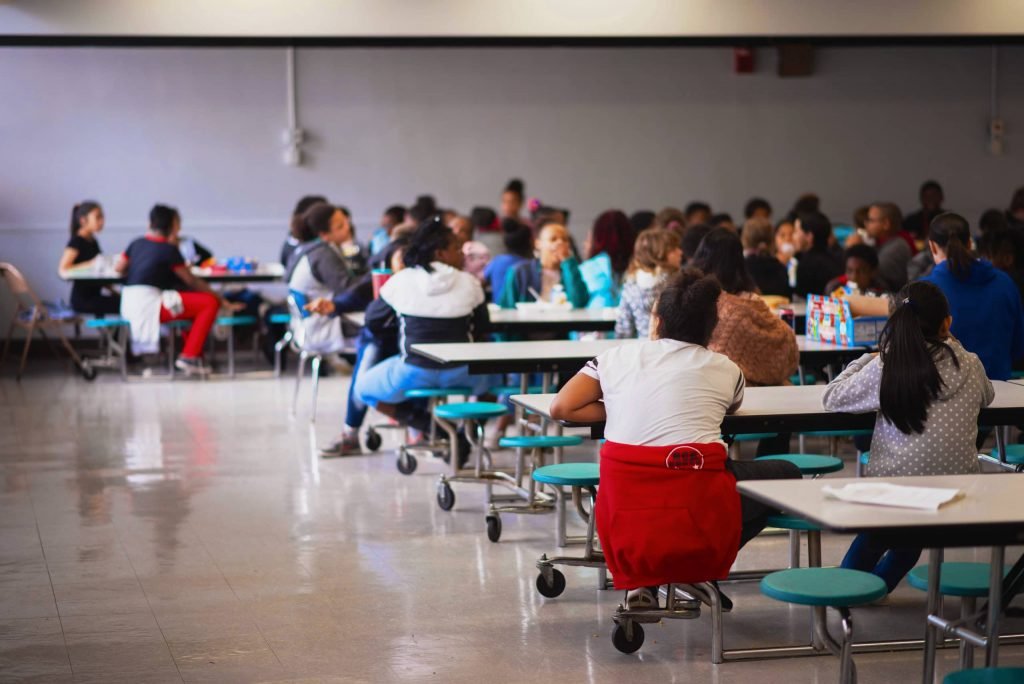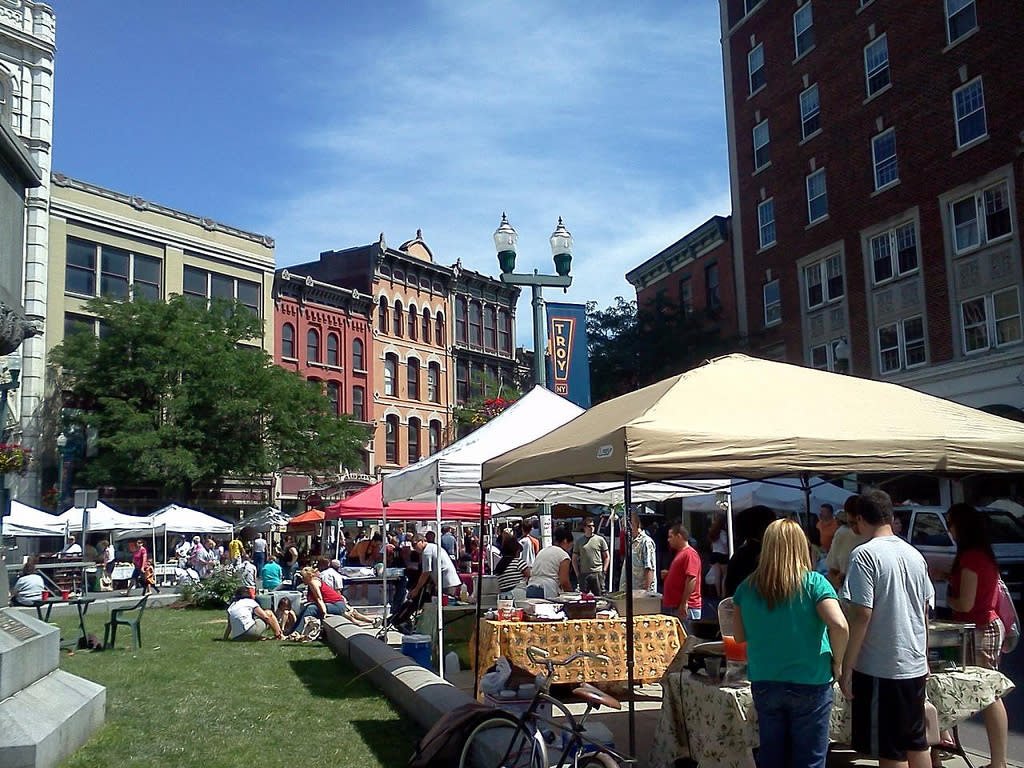
Three Fundraising Moves Grassroots Nonprofits Can Make This September
September marks a turning point for grassroots nonprofits. The summer slowdown is behind us, and the push toward year-end giving is right ahead. This makes fall the perfect season to spark fresh momentum with your supporters. You do not need a major campaign to make progress right now. What matters is creating small, intentional opportunities that bring people closer to your mission and give them a reason to give.

5 Upcoming Environmental Grants to Add to Your Fall Rotation
For frontline nonprofits and grassroots collectives, fall is a strategic season to secure environmental funding. Many funders align their grant cycles with year-end budgeting and planning, making September through November 2025 an essential window for justice-oriented organizations to pitch bold ideas and lock in resources for the year ahead.

Fall 2025 Development & Strategy Fellowship
Harvey & Smith Impact is accepting letters of interest for our Fall 2025 Development & Strategy Fellowship. This is a part-time, paid opportunity for three individuals who want to learn how small, justice-focused nonprofits stay organized and raise the money they need to do their work.

The Psychology of the Ask. Why Nonprofits Need to Rethink Fundraising Relationships, Especially in Times of Urgency
Most people are not afraid to ask for help. They are afraid of hearing no. In fundraising, that fear is often disguised as relationship-building, timing, or due diligence. But beneath the surface, the hesitation is psychological. It is shaped by avoidance, perfectionism, and discomfort with rejection.

The Work Doesn’t Pause. How to Keep Asking for Support When War Dominates the Headlines.
When war dominates the headlines, many nonprofit leaders hesitate to fundraise. But for organizations challenging systemic violence, asking for support is not a distraction. It is part of the work. This post offers clear guidance for how to keep fundraising with integrity, even in a time of grief, urgency, and political uncertainty.

Why Silver Dollar Road Should Be Required Viewing for Grassroots Organizers
Raoul Peck’s Silver Dollar Road is a powerful resource for grassroots leaders. The film follows a family’s fight to protect their ancestral land, raising urgent questions about legal literacy, land justice, and community resilience. This post offers key takeaways for nonprofit teams looking to turn the film into action, strategy, and deeper impact.

3 Rapid Response Grants to Add to Your Radar This Month
If your nonprofit is BIPOC-led or serves Black, Brown, low-income, LGBTQ+, or gender-oppressed communities, these three grants are worth your attention. Each one is open on a rolling basis. The application processes are straightforward, but funds are limited and awarded quickly. If your work fits, consider applying while support is still available.

Building with Integrity in a Burnout Economy
Harvey & Smith Impact founder Larry Blake Harvey reflects on the hidden roots of burnout and the cost of staying in misaligned spaces. In this personal piece, Larry shares what it’s taken to realign his work with care, clarity, and mutual respect—especially in spaces that say the right things but act otherwise. If you’ve ever been celebrated for your commitment yet sidelined in decision-making, this one’s for you. It’s a call to honor your own boundaries, even when the mission looks good on paper.

Liberation Is on the Land: Why “Farming While Black” Belongs on Every Nonprofit Leader’s Shelf
At a time when organizations are navigating shrinking budgets, political pressure, and mounting burnout, Farming While Black offers something rare: practical tools rooted in justice, healing, and community power. Written by Soul Fire Farm’s Leah Penniman, this book is a blueprint for building programs, teams, and systems that reflect the values we fight for. Our latest review explores why this title belongs on every nonprofit leader’s shelf and how it can reshape your approach to strategy, structure, and mission.

This Is Where We Begin: The Bookshelf by Harvey & Smith Impact
We built The Bookshelf for the people we work with every day. Nonprofit leaders. Public servants. Organizers. Educators. People reshaping systems in real time. People who do not need inspiration. They need tools. Our collection spans multiple categories, but Justice and Liberation is where the work often starts. These titles confront the roots of systemic harm and offer frameworks for action. We sell them because we use them. In board retreats. In strategy sessions. In direct response to urgent questions.

The Thank-You Letter That Builds Your Monthly Donor Base
A thank-you letter is more than a polite response — it is a defining moment in a donor’s journey. Done well, it transforms generosity into belonging, and a one-time gift into an ongoing relationship rooted in trust. In this piece, we explore how expert-level donor communication begins with gratitude, offering a full case study in writing thank-you letters that do more than close a gift. They open the door to lasting partnership, deeper investment, and shared vision. A single letter, crafted with care, can become the first step in building the kind of support that sustains a mission for years to come.

The Nonprofit World Doesn’t Need More Innovation. It Needs Breathing Room
There’s a quiet pressure in the nonprofit world that most of us have internalized without realizing it: the sense that whatever we’re already doing isn’t quite enough. Not bold enough, not shiny enough, not new enough to land the grant, excite the donor, or keep pace with what feels like a moving target. And so we adapt. We layer on new programs, reframe existing work in trendier language, or invent value where there’s already plenty, just to stay in the game. But what if that instinct, especially right now, is pulling us in the wrong direction?

More Than Money: How Nonprofits Can Expand Capacity by Working Smarter
At first, the urgency is energizing. You run on passion, on belief, on the undeniable need that fuels the work. But then the cracks appear - slowly, then all at once. Staff members burn out. Volunteers lose interest. Programs that should run like clockwork stumble instead, bottlenecked by miscommunication, missed deadlines, and a never-ending game of catch-up. This is where most nonprofits find themselves - not because they lack dedication, but because the way they operate is unsustainable. And yet, when they ask what’s needed, the answer is almost always the same: more money. But what if that isn’t the only way forward?

Beyond Symbolism: How Nonprofits & Local Governments Can Sustain DEI Efforts Amid Federal Rollbacks
Today, President Trump hosted a Black History Month event at the White House, recognizing the contributions of Black Americans. At the same time, his administration has rapidly moved to dismantle DEI initiatives across the federal government, including policies that have historically aimed to address racial inequities in hiring, funding, and decision-making.

Funding Environmental Justice Work in New England & Upstate New York: 5 Grants for Nonprofits in 2025
Funding for environmental justice work isn’t always easy to find, especially for grassroots organizations doing the heavy lifting. This list highlights five grants to have on your radar for 2025 if you’re working on clean air, safe water, or climate resilience in New England or Upstate New York. Each grant includes key details like eligibility, deadlines, and tips to strengthen your application so you can spend less time searching and more time making an impact.

Children Shouldn’t Have to Work for Their Lunches - Why Universal Free Meals Matter
Rep. Rich McCormick (R-Ga.) recently suggested that kids should take jobs at fast-food restaurants instead of receiving free school meals. His comments ignore the realities of food insecurity, economic inequality, and childhood development. In our latest journal entry, Harvey & Smith Impact Principal Consultant Larry Blake Harvey responds to McCormick’s remarks, outlining why universal free meal (UFM) programs are a proven investment in children’s health, education, and future success.

How can nonprofits address DEI in grant proposals amid recent policy shifts under the Trump administration?
The Trump administration’s recent rollback of federal DEI programs is a stark reminder of the ongoing challenges to advancing equity in this political climate. Federal agencies have been instructed to terminate DEI initiatives, and private sectors are being encouraged to follow suit. These changes don’t just signal a shift in priorities - they demand a recalibration of how nonprofits advocate for and sustain their DEI efforts.

How Upstate Nonprofits Can Prepare for Changes Under the Trump Administration
For example: Federal housing policies may shift under the new administration, affecting programs that support affordable housing and tenant protections. Nonprofits involved in housing should pay close attention to HUD announcements and explore partnerships to address local needs.

How Should a Nonprofit Track Progress and Measure Success After Securing Their First Grant?
For small nonprofits, tracking progress and measuring success can feel overwhelming. Take Maria, for example, a nonprofit leader who secured her first grant to launch a STEM program for kids in rural communities. She quickly realized she needed a clear plan to meet funder expectations and show the impact of her work.

Book Review: How to Tell a Story: An Ancient Guide to the Art of Storytelling for Writers and Readers
What sets How to Tell a Story apart is its accessibility. It doesn’t require any prior knowledge of storytelling theory or literary techniques. Instead, it distills complex ideas into practical steps that anyone can follow, making it an essential resource for nonprofit professionals, local leaders, and anyone aiming to create meaningful connections through their words.
